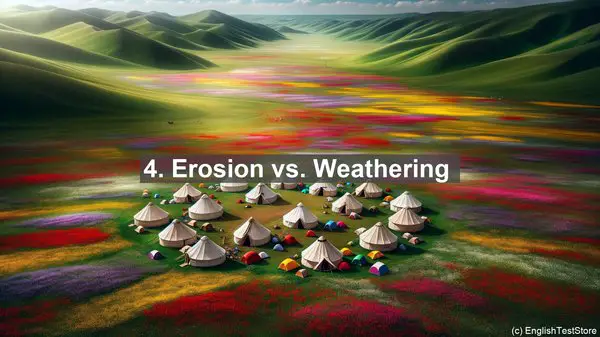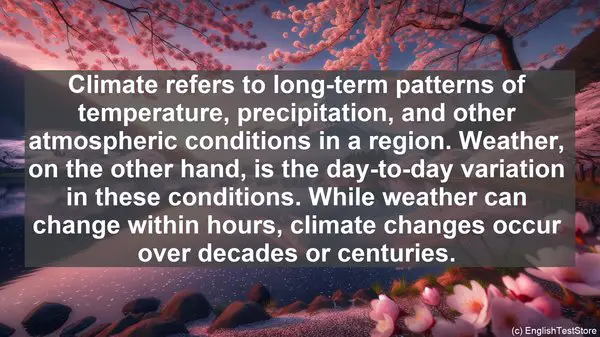Introduction to Paleoclimatology
Before we dive into the commonly confused words, let’s have a quick overview of paleoclimatology. It is the study of past climates, often using natural records like ice cores, tree rings, and sediment layers. Understanding paleoclimatology is crucial for comprehending climate change patterns.
1. Climate vs. Weather
Climate refers to long-term patterns of temperature, precipitation, and other atmospheric conditions in a region. Weather, on the other hand, is the day-to-day variation in these conditions. While weather can change within hours, climate changes occur over decades or centuries.

2. Global Warming vs. Climate Change
Global warming specifically refers to the increase in Earth’s average surface temperature due to human activities, primarily the emission of greenhouse gases. Climate change, however, encompasses a broader range of impacts, including shifts in precipitation patterns, sea-level rise, and more frequent extreme weather events.
3. Ice Age vs. Glacial Period
An ice age is a long period of time, typically millions of years, characterized by extensive ice sheets covering large parts of the Earth. Within an ice age, there are glacial and interglacial periods. Glacial periods are colder phases with significant ice sheet expansion, while interglacial periods are relatively warmer and have reduced ice cover.
4. Erosion vs. Weathering
Erosion and weathering are both processes that shape the Earth’s surface, but they differ in their mechanisms. Weathering refers to the breakdown of rocks and minerals in situ, while erosion involves the transport of these weathered materials by wind, water, or ice.

5. Greenhouse Effect vs. Enhanced Greenhouse Effect
The greenhouse effect is a natural phenomenon where certain gases in the atmosphere trap heat, keeping the Earth’s surface warmer than it would be without them. The enhanced greenhouse effect, caused by human activities, intensifies this trapping effect, leading to global warming.
6. El Niño vs. La Niña
El Niño and La Niña are opposite phases of the El Niño-Southern Oscillation (ENSO) cycle, which affects global weather patterns. El Niño refers to the warming of the central and eastern tropical Pacific Ocean, while La Niña is characterized by cooler-than-average sea surface temperatures in the same region.
7. Isostasy vs. Eustasy
Isostasy is the equilibrium between the Earth’s crust and the underlying mantle, where the crust floats on the denser mantle. Eustasy, on the other hand, refers to changes in global sea level, often caused by the melting or formation of ice sheets.
8. Milankovitch Cycles
Milankovitch cycles are long-term variations in Earth’s orbit and axial tilt, which affect the amount and distribution of solar radiation reaching the planet’s surface. These cycles play a significant role in driving natural climate changes over tens of thousands of years.
9. Proxy Data
Proxy data are indirect measurements of past climate conditions, such as tree rings, ice cores, and sediment layers. By analyzing these proxies, scientists can reconstruct past climate patterns and understand how they have changed over time.
10. Anthropocene
The Anthropocene is a proposed geological epoch that marks the period during which human activities have had a significant impact on Earth’s ecosystems and climate. It is a testament to the profound influence we have on the planet’s natural processes.
